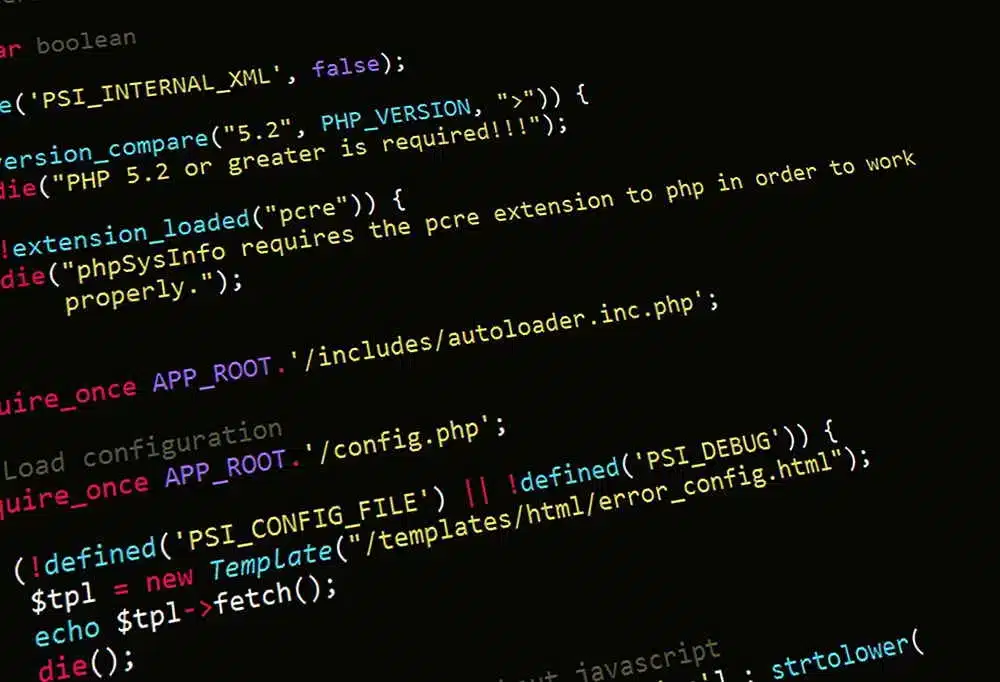In an ever-evolving technological realm, can you afford to overlook the security of your code? You’re not just writing software; you’re building fortresses to protect valuable data and user trust.
Secure coding isn’t a luxury—it’s a necessity. By implementing five key practices, you’ll greatly reduce vulnerabilities and strengthen your applications against potential threats.
From input validation to staying updated with the latest security patches, each step plays a vital role in safeguarding your software.
But what exactly are these practices, and how can you effectively integrate them into your development process? Let’s examine the essential strategies that’ll raise your coding security to new heights.
Input Validation
Input validation is your first defense against nasty data trying to sneak into your app. It’s all about making sure only the good stuff gets through. You’ve gotta be strict with those checks – forms, URL bits, API calls, the whole shebang. Think of it like a bouncer at a club, only letting in the folks on the list.
Whitelist what’s okay and kick out everything else. Clean up that data by ditching or encoding the sketchy characters. And don’t just rely on client-side checks – always double-check on the server. It’s like having a backup bouncer, just in case.
Set some ground rules: how long can stuff be? What type should it be? Any limits on numbers or dates? Don’t forget about file uploads – size matters, and so does the file type. By being picky about what gets in, you’re slamming the door on injection attacks and other security nightmares.
Authentication and Authorization

Ever wonder how websites know it’s really you logging in? That’s authentication in action. It’s like showing your ID at a club – proving you’re who you say you are.
But it doesn’t stop there. Once you’re in, the bouncer decides what areas you can access. That’s authorization.
Authentication is all about identity. It’s not just passwords anymore. Many sites now use multi-factor authentication – like sending a code to your phone. It’s like having a secret handshake on top of your ID.
And when you create an account, good websites don’t just store your password as-is. They scramble it up (we call this hashing) and add some extra spice (that’s salting). This way, even if bad guys get their hands on the data, they can’t easily crack your password.
Authorization is about permissions. Think of it as different VIP levels at that club. Some folks can only access the main dance floor, while others get into the fancy lounges. In tech-speak, we call this ‘role-based access control’ or RBAC. It’s a fancy way of saying ‘you can do this, but not that’ based on who you are.
You gotta keep an eye on these permissions. People change roles, leave companies, or sometimes get a bit too much access by mistake.
That’s why smart companies regularly check who’s access to what. It’s like doing a security sweep of the club to make sure no one snuck into the VIP area.
Just because someone says they’re allowed to do something doesn’t mean they are. Always double-check permissions on both ends – the user’s device and the server. It’s like having bouncers at every door, not just the main entrance.
Data Encryption
Data encryption is the superhero of digital security. It takes your regular, easy-to-read info and turns it into a secret code that only the right key can crack.
When you’re coding, stick to the tried-and-true encryption methods like AES or RSA. Don’t get fancy with homemade or old-school solutions – they’re like using a paper lock on a bank vault.
Keeping your encryption keys safe is super important. Think of them as the ultimate backstage passes to your data. Use special systems to manage them and switch them up regularly.
Always encrypt sensitive data, whether it’s sitting still or zooming across the internet. For web stuff, HTTPS is your best friend. It’s like wrapping your data in a protective bubble as it travels.
If you’re using passwords for encryption, don’t just use them as-is. Run them through special functions like PBKDF2 or bcrypt first. It’s like turning a regular password into a super-password.
Watch out for sneaky attacks that try to peek at your encryption process. It’s like someone trying to guess your ATM PIN by watching how you move your hand. There are ways to stop this, so use them.
Remember, encryption alone isn’t enough. You need to make sure your encrypted data hasn’t been messed with. Digital signatures or special codes can help with this. It’s like putting a tamper-evident seal on your digital envelope.
Keep checking your encryption setup and stay in the loop about new standards. The digital world changes fast, and you want to stay ahead of the bad guys.
Secure Coding Practices

Let’s talk about beefing up your code’s defenses. First things first: input validation is your best friend. It’s like a bouncer at a club, checking IDs and keeping the riffraff out. Always clean and double-check what users throw at you before you do anything with it.
When it comes to databases, think of parameterized queries as your secret weapon against SQL injection. It’s like using a bulletproof vest when handling potentially dangerous data.
Remember the golden rule: don’t give out VIP passes to everyone. Only hand out the permissions that are absolutely necessary. It’s like giving your house keys to a pet sitter – they only need access to certain areas, not your entire home.
Errors happen, but don’t let them spill the beans. Handle them gracefully and log them, but keep the juicy details under wraps. It’s like having a private conversation – you don’t want everyone to hear it.
Stay on top of your dependencies like you’d with software updates on your phone. Old versions can be a hacker’s playground, so keep everything fresh and patched up.
HTTPS is your best buddy for data transmission. It’s like sending a letter in a locked box instead of a postcard anyone can read.
When it comes to passwords, be picky. Enforce strong authentication and make sure users aren’t using ‘password123’ to protect their accounts.
Secure session management is crucial. Think of it as keeping a close eye on your customers in a store to prevent shoplifting.
Static code analysis tools are like having a proofreader for your code. They catch potential slip-ups before they become real problems.
Lastly, regular security audits and penetration testing are like health check-ups for your code. They help you spot and fix any weaknesses before the bad guys can exploit them.
Stay Updated
Implementing secure coding practices is just the beginning. Keeping your codebase safe demands constant attention through regular updates and patches. It’s crucial to stay in the loop about the latest security vulnerabilities and trends in your programming languages, frameworks, and libraries. Get yourself on security mailing lists and follow trusted security blogs for timely alerts.
Don’t forget to update your development environment, tools, and dependencies regularly. Set up a solid patch management process to tackle known vulnerabilities quickly. Check this out:
| Action | Frequency | Responsibility |
|---|---|---|
| Check for updates | Daily | Developer |
| Apply security patches | As released | System Admin |
| Review dependencies | Weekly | Team Lead |
| Conduct security audits | Quarterly | Security Team |
Staying on top of these tasks might seem like a hassle, but it’s way better than dealing with a security breach. Think of it like keeping your car in good shape – regular oil changes and tune-ups prevent bigger problems down the road.
Remember, cybercriminals are always looking for new ways to exploit vulnerabilities. By staying updated, you’re not just protecting your code – you’re safeguarding your users’ data and your company’s reputation. It’s a no-brainer, really.


















